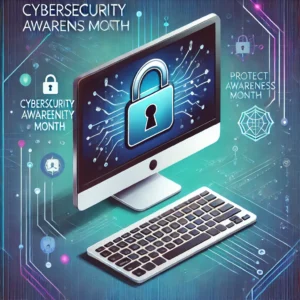Employee security mistakes are often the silent culprits behind significant business risks. This post will uncover how these unintentional errors by the most valuable asset of a company – its employees – can lead to considerable cybersecurity threats.
Understanding Employee Security Mistakes
Employee security mistakes aren’t just a possibility; they’re common in the modern workplace. These errors can have far-reaching consequences, whether it’s a misplaced click or a forgotten password update.
- The Human Factor in Cybersecurity: The human element is at the core of these mistakes. Regardless of their role or seniority, employees can fall prey to common cybersecurity pitfalls. This could be due to a need for more awareness, training, or simply the pressure of multitasking in a fast-paced work environment.
- Common Types of Mistakes: These mistakes can manifest in various ways, such as:
- Phishing Scams: Falling for fraudulent emails or messages that appear legitimate but by design to steal sensitive information.
- Password Management Errors: Using weak passwords or failing to update them regularly makes it easier for hackers to gain access.
- Mismanagement of Sensitive Data: Accidentally sending confidential information to the wrong recipient or leaving sensitive documents unprotected.
- Psychology Behind the Mistakes: Understanding the psychology behind why these mistakes occur is crucial. Often, it’s not negligence but factors like overconfidence in one’s ability to identify threats, the influence of work stress, or simply being unaware of best cybersecurity practices.
- The Role of Workplace Culture: The workplace environment plays a significant role in handling and preventing these mistakes. A culture that prioritizes cybersecurity awareness and encourages open communication about errors can be pivotal in mitigating risks.
Typical Errors and Their Impact
From clicking on suspicious email links to sharing sensitive information without proper protocols, employee security mistakes come in various forms. This section will explore these common errors and their potential risks to business security.
- Phishing Scams: One of the most prevalent mistakes is falling victim to phishing attacks. Employees may unknowingly click on malicious links in emails, messages, or websites, thinking they are legitimate. This can lead to unauthorized access to sensitive company data, financial loss, and even ransomware attacks.
- Weak Password Practices: Many security breaches are due to poor password management. Employees often use simple, easy-to-guess passwords or reuse the same passwords across multiple platforms. This makes it easier for cybercriminals to access company systems, potentially leading to data theft or compromise.
- Improper Handling of Sensitive Data: Employees may accidentally send confidential information to the wrong recipient, leave sensitive documents unsecured, or mishandle data due to inadequate understanding of data protection protocols. Such incidents can result in data breaches, violating client trust and potentially leading to legal repercussions.
- Use of Unsecured Networks: Connecting to unsecured Wi-Fi networks, especially while working remotely, can expose the company’s network to intruders. This can lead to interception of sensitive data or unauthorized network access.
- Downloading Unauthorized Software: Employees who download software or applications not vetted by the IT department can unknowingly introduce malware or other vulnerabilities into the business network, jeopardizing the company’s cybersecurity infrastructure.
- Neglecting Software Updates: Failing to update software regularly can leave systems vulnerable to known security flaws. Hackers often exploit these vulnerabilities, leading to security breaches.
- Impact on Business: These mistakes can have far-reaching consequences for businesses. They can lead to substantial financial losses, damage to reputation, loss of customer trust, and, in some cases, legal liabilities. The disruption caused by these security incidents can also affect business operations and employee productivity.
Educating Your Team on Cybersecurity
One of the most effective ways to reduce employee security mistakes is through education. By fostering a culture of continuous learning and cybersecurity awareness, businesses can significantly mitigate these risks. We’ll discuss practical strategies for educating your workforce.
Creating a Culture of Cyber Awareness
Employee security mistakes can be drastically reduced by cultivating a workplace culture prioritizing cybersecurity. This means not just one-off training sessions but an ongoing conversation about the importance of safe online practices.
- Developing a Comprehensive Cybersecurity Training Program: Initiate regular training sessions covering various cybersecurity aspects. These sessions should cater to different levels of technical expertise, ensuring that all employees, regardless of their role, understand the basics of cyber hygiene.
- Customized Learning Paths: Recognize that other departments face cyber risks. Tailor your training programs to address the specific needs of each department. For instance, your finance team should be trained on threats like invoice fraud, while your IT team might need more advanced training on network security.
- Interactive and Engaging Training Methods: Move beyond traditional lecture-based training. Use interactive methods like workshops, gamification, and real-life scenario simulations to keep employees engaged and enhance their understanding of cybersecurity concepts.
- Regular Updates and Refresher Courses: Cyber threats evolve rapidly. Regularly update your training content to include the latest threats and security practices. Additionally, conduct refresher courses to ensure the information stays fresh in your employees’ minds.
Proactive Steps to Minimize Risks
Reducing the incidence of employee security mistakes requires proactive measures. This can range from implementing robust security protocols to regular audits and feedback sessions.
- Implementing Strong Password Policies: Enforcing robust password policies is crucial. This includes requiring complex passwords, implementing multi-factor authentication, and regularly prompting password changes.
- Regular Security Audits and Assessments: Conducting periodic security audits helps identify vulnerabilities within the system. These assessments can pinpoint potential risk areas and guide the development of strategies to address them.
- Updating and Patching Systems: Keeping all software and systems updated with the latest patches and updates is critical in protecting against known vulnerabilities. This should be a regular and mandatory process.
- Controlling Access to Sensitive Information: Implementing access controls ensures that only authorized personnel have access to sensitive data. This minimizes the risk of accidental or unauthorized exposure of critical information.
- Encouraging Safe Web Practices: Educate employees about safe browsing habits, such as avoiding unsecured Wi-Fi networks, especially when accessing company data. This also includes being cautious about downloading software and understanding the risks associated with external devices like USB drives.
- Creating Incident Response Plans: A well-defined incident response plan ensures employees know what to take during a security breach. This plan should be regularly reviewed and updated.
- Encouraging a Culture of Transparency: Fostering a work environment where employees feel comfortable reporting mistakes without fear of retribution is vital. This enables timely reporting of security incidents, allowing quicker response and resolution.
- Utilizing Secure Communication Tools: Ensuring that all communication tools used within the organization are secure and encrypted can significantly reduce the risk of information leakage or interception.
- Regular Backups: Regularly backing up critical data as a precaution against data loss due to cyber incidents is an essential practice. This helps in quick recovery in case of data breaches or ransomware attacks.
Conclusion
While employee security mistakes are a significant threat to business cybersecurity, they can be managed and minimized through education, culture-building, and strategic partnerships. The key is to stay informed, vigilant, and proactive in your approach to cybersecurity.
Sometimes, managing and mitigating employee security mistakes requires external expertise. A partnership with cybersecurity firms like Underdog Cyber Defense can be invaluable.
Is your business prepared to tackle employee security mistakes effectively? Contact Underdog Cyber Defense for a comprehensive assessment and tailored solutions to safeguard your business against these internal threats.




